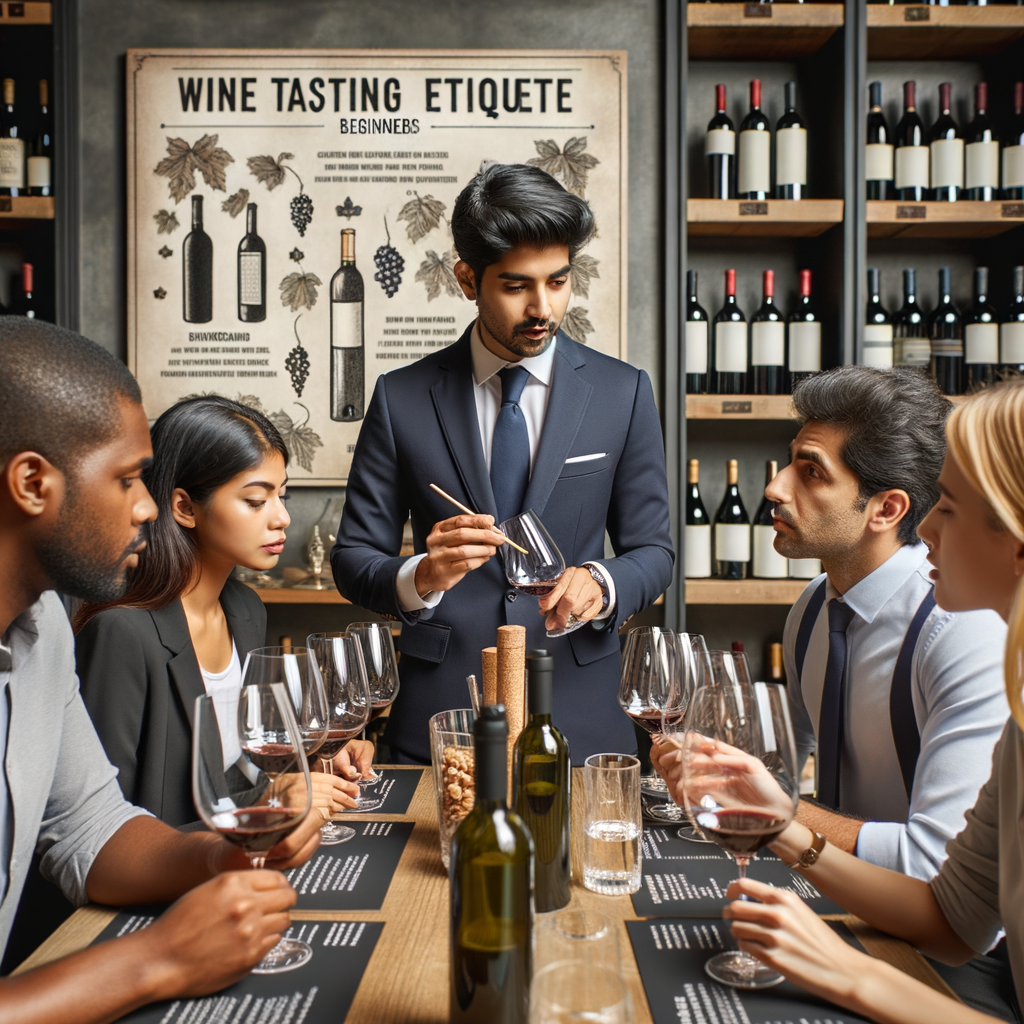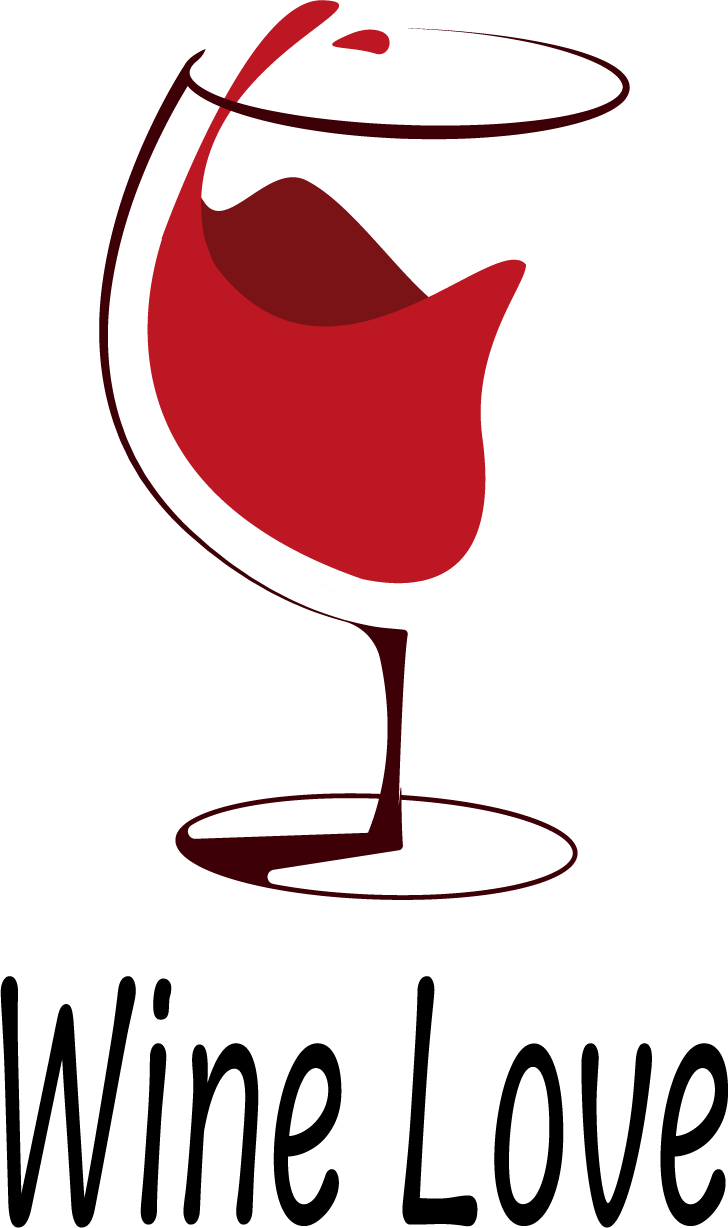
Introduction to Wine Tasting for Beginners
Wine tasting is a delightful experience that combines the senses and the intellect. It’s not just about drinking wine; it’s about appreciating its complexity and diversity. This introduction will guide beginners through the basics of wine tasting and explain why it’s considered an art.
- Understanding the basics of wine tasting
Wine tasting is a skill that anyone can learn. It involves more than just sipping and swallowing. There are four main steps to tasting wine: look, smell, taste, and think.
Look: Observe the color and clarity of the wine. This can give you clues about its age and type.
Smell: Swirl the wine in your glass to release its aromas. Try to identify different scents. This can tell you about the grape variety and the wine’s origin.
Taste: Take a small sip and let it roll around your tongue. Try to identify the flavors. Is it sweet or dry? Light or full-bodied? This can tell you about the wine’s quality and style.
Think: Reflect on the wine’s overall impression. Did you enjoy it? Why or why not? This step is subjective and depends on personal preference.
- Why wine tasting is an art
Wine tasting is often considered an art because it involves careful observation, interpretation, and appreciation. Just like art, wine is a reflection of its environment and its maker’s skill and creativity. Each wine is unique, with its own character and story to tell.
Moreover, wine tasting is a personal experience. Everyone perceives wine differently based on their individual senses and tastes. Therefore, there’s no right or wrong way to taste wine. It’s all about exploring and discovering what you enjoy.
Wine tasting is a fascinating journey that can enrich your understanding and enjoyment of wine. So, take your time, be curious, and most importantly, have fun!
Wine Tasting Etiquette
When it comes to wine tasting, there’s more to it than just sipping and savouring. There’s a certain etiquette to follow, especially at professional events. Let’s delve into the world of professional wine tasting etiquette.
Professional Wine Tasting Etiquette
Professional wine tasting events are a great place to learn about different types of wines, meet wine enthusiasts and experts, and enjoy the overall experience. However, it’s important to know how to behave at these events and understand the do’s and don’ts.
-
- How to Behave at a Professional Wine Tasting Event
At a professional wine tasting event, it’s crucial to maintain a respectful and considerate demeanor. You’re there to appreciate the wine, not to get intoxicated. Here are a few key points to keep in mind:
-
-
- Be punctual: Arriving on time shows respect for the event and its organizers.
- Dress appropriately: Opt for business casual attire.
- Don’t wear strong perfumes or colognes: These can interfere with the aroma of the wines.
- Use the spittoon: It’s there for a reason. It allows you to taste numerous wines without consuming too much alcohol.
- Understanding the Do’s and Don’ts
-
Knowing what to do and what not to do can make your wine tasting experience more enjoyable and less stressful. Here are some do’s and don’ts:
-
- Do swirl the wine: This helps release the wine’s aromas.
- Don’t fill your glass: A small amount is enough for tasting.
- Do ask questions: Don’t be shy about asking the sommelier or host about the wines.
- Don’t rush: Take your time to appreciate each wine.
Professional wine tasting etiquette is all about respect – for the wine, the event, and the other attendees. By following these guidelines, you can ensure a memorable and enjoyable wine tasting experience.
Wine Etiquette for Beginners
Wine tasting is an art that requires a certain level of etiquette. As a beginner, it’s important to understand these basic rules to fully enjoy the experience and avoid common mistakes. Let’s delve into the basics of wine tasting etiquette.
-
- Basic etiquette rules for wine tasting
Here are some fundamental rules to keep in mind:
-
-
- Don’t wear perfume or cologne: Fragrances can interfere with the aroma of the wine, which is a crucial part of the tasting experience.
- Don’t rush: Take your time to appreciate the color, aroma, and taste of the wine. Wine tasting is not a race.
- Use the spittoon: It’s perfectly acceptable to spit out wine during a tasting. This allows you to taste more wines without becoming intoxicated.
- Ask questions: Don’t be afraid to ask questions. Wine experts appreciate your interest and are there to help you learn.
- Common mistakes to avoid
-
As a beginner, it’s easy to make mistakes. Here are some common ones to avoid:
-
- Drinking instead of tasting: Wine tasting is about savoring and understanding the wine, not drinking it. Take small sips and let the wine linger in your mouth.
- Ignoring the color and aroma: Before tasting, take a moment to observe the color and smell the wine. These steps can tell you a lot about the wine’s character and quality.
- Being influenced by others: Everyone’s palate is different. Don’t let others’ opinions influence your own. Trust your taste buds.
- Feeling intimidated: Wine tasting should be a fun and educational experience. Don’t feel intimidated by the process or the people around you.
Understanding and following these basic wine tasting etiquettes can enhance your experience and deepen your appreciation for the art of wine tasting. The goal is to enjoy the experience and learn more about wine.
Guide to Wine Tasting
Wine tasting is an art that requires practice and understanding. In this section, we will delve into the techniques that professionals use to taste wine and understand its various aspects.
Wine Tasting Techniques
There are several techniques that professionals use to taste wine. These techniques help them to understand the wine’s flavor, aroma, and texture. Let’s explore these techniques in detail.
- How to taste wine like a professionalTasting wine like a professional involves a few simple steps. First, observe the color and clarity of the wine. Swirl it gently in the glass to release its aromas. Then, take a small sip and let it linger in your mouth before swallowing. This allows you to taste the different flavors in the wine. Lastly, take a moment to reflect on the taste and aroma of the wine. This process helps professionals to understand the wine’s complexity and quality.
- Understanding the different techniquesThere are several techniques that professionals use to taste wine. These include:
- The Swirl: This helps to release the wine’s aromas.
- The Sniff: This is done to identify the different scents in the wine.
- The Sip: This is done to taste the wine’s flavors.
- The Spit or Swallow: Professionals often spit the wine out after tasting it to avoid consuming too much alcohol.
Understanding these techniques can enhance your wine tasting experience and help you appreciate the nuances of different wines.
By practicing these techniques, you can enhance your wine tasting skills and enjoy a richer, more rewarding wine tasting experience.
Wine Tasting Tips
Whether you’re a novice or an experienced wine enthusiast, these tips will help you enhance your wine tasting experience and skills.
- Top tips for a successful wine tasting experienceWine tasting is an art that requires practice and understanding. Here are some tips to make your wine tasting experience more successful:
- Take it slow: Don’t rush through the tasting. Take your time to savor each sip and appreciate the different flavors.
- Use your senses: Look at the color, smell the aroma, and taste the wine. Each sense provides different information about the wine.
- Take notes: Write down your impressions of each wine. This will help you what you liked or didn’t like about each one.
- Don’t be afraid to spit: Spitting out the wine after tasting it allows you to taste more wines without becoming intoxicated.
- How to enhance your wine tasting skillsImproving your wine tasting skills takes time and practice. Here are some ways to enhance your skills:
- Learn about wine: Read books, attend wine tastings, and talk to experts. The more you know about wine, the better you’ll be at tasting it.
- Practice regularly: The more you taste, the better you’ll become at identifying flavors and aromas.
- Try different wines: Don’t stick to one type of wine. Trying different wines will help you understand and appreciate the diversity of flavors.
- Trust your palate: Everyone’s taste is different. Trust your own palate and don’t be swayed by others’ opinions.
Wine tasting is a personal experience. There’s no right or wrong way to taste wine. The most important thing is to enjoy the experience and have fun!
Understanding Wine Tasting
Wine tasting is an art that requires knowledge and practice. It’s not just about sipping and swallowing, but about understanding the nuances of different types of wines and identifying the various flavors they contain. Let’s delve into the basics of wine tasting.
Basics of Wine Tasting
Before we start, it’s important to know that wine tasting is a personal experience. It’s about understanding and appreciating the wine’s character and complexity. Here are some basic steps to help you get started.
-
- Understanding the different types of wine
There are several types of wines, each with its own unique characteristics. The main types include red, white, rosé, sparkling, and dessert wines. Red wines are made from black grapes and are known for their bold flavors. White wines, made from green grapes, are often lighter and fruitier. Rosé wines are made from black grapes but have a pinkish color because the grape skins are not left in the juice for long. Sparkling wines have bubbles and can be made from any type of grape. Dessert wines are sweet and are usually served with dessert or after a meal.
-
- How to identify the different flavors in wine
Identifying flavors in wine can be a fun and exciting challenge. The flavors you taste in wine are influenced by several factors, including the type of grape, the region where it was grown, and the winemaking process. Some common flavors you might taste in red wines include fruits like berries and cherries, spices like black pepper, and other flavors like chocolate or tobacco. White wines often have flavors of green apple, citrus fruits, and sometimes a bit of honey or vanilla. It’s important to take your time and savor each sip to identify these flavors.
Wine tasting is a journey, not a destination. It’s about exploring and enjoying the world of wine. So, take your time, savor each sip, and most importantly, enjoy the experience.
Wine Tasting Guide for Beginners
If you’re new to the world of wine tasting, don’t worry. We’ve got you covered. This guide will walk you through the basics and help you develop your palate for wine tasting. Let’s get started!
-
- Step-by-step guide to wine tasting
Wine tasting can seem intimidating, but it’s actually quite simple once you get the hang of it. Here’s a step-by-step guide to help you get started:
-
-
- Look: Observe the color and clarity of the wine. This can give you clues about its age and type.
- Swirl: Gently swirl the wine in your glass. This helps to release its aromas.
- Smell: Take a moment to smell the wine. Try to identify different scents. This can range from fruits to spices to earthy notes.
- Taste: Finally, take a small sip of the wine. Let it roll around your mouth before swallowing. Try to identify the different flavors.
- How to develop your palate for wine tasting
-
Developing your palate takes time and practice. Here are a few tips to help you along the way:
-
- Try different wines: The more wines you taste, the better you’ll become at identifying different flavors and aromas.
- Take notes: Keep a wine tasting journal. Write down the flavors and aromas you identify in each wine. This can help you compare different wines.
- Pair with food: Pairing wine with food can help bring out its flavors. Try different combinations and see what works best.
- Be patient: Developing your palate takes time. Don’t rush it. Enjoy the journey!
Wine tasting is a personal experience. There’s no right or wrong way to do it. The most important thing is to enjoy the process and have fun!
Conclusion
- Recap of the Key TakeawaysWine tasting is an art that requires time and practice to master. We’ve learned that the process involves more than just sipping the wine. It’s about observing the color, smelling the aroma, and savoring the taste. We’ve also discovered the importance of wine tasting etiquette, such as not wearing strong perfumes and understanding the right order to taste different types of wines.
Moreover, we’ve delved into the different types of wines and their unique characteristics. We’ve learned about the importance of the wine’s origin, the grape variety, and the aging process in determining its flavor and aroma. We’ve also learned how to use a wine tasting chart to help us identify and describe the different flavors and aromas we experience.
- Final Thoughts on Mastering the Art of Wine TastingMastering the art of wine tasting is a journey that can be as rewarding as it is educational. It’s a skill that not only enhances our appreciation of wine but also enriches our dining experiences and social gatherings. It’s a journey of discovery, where each bottle of wine tells a story about its origin, the people who made it, and the land where the grapes were grown.
As we continue to explore the world of wine tasting, the most important thing is to enjoy the experience. As the famous wine connoisseur Robert Louis Stevenson once said, “Wine is bottled poetry.” So let’s savor each sip, enjoy the poetry, and continue our journey in the delightful world of wine tasting.




